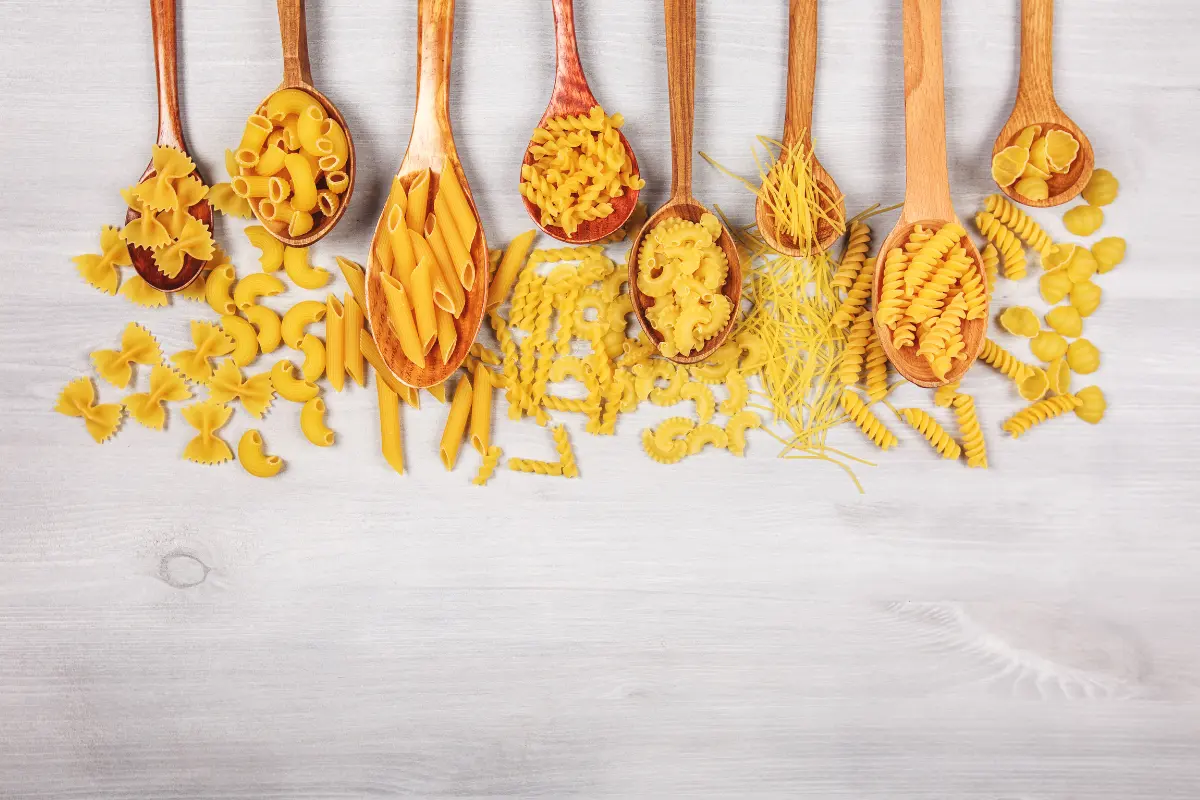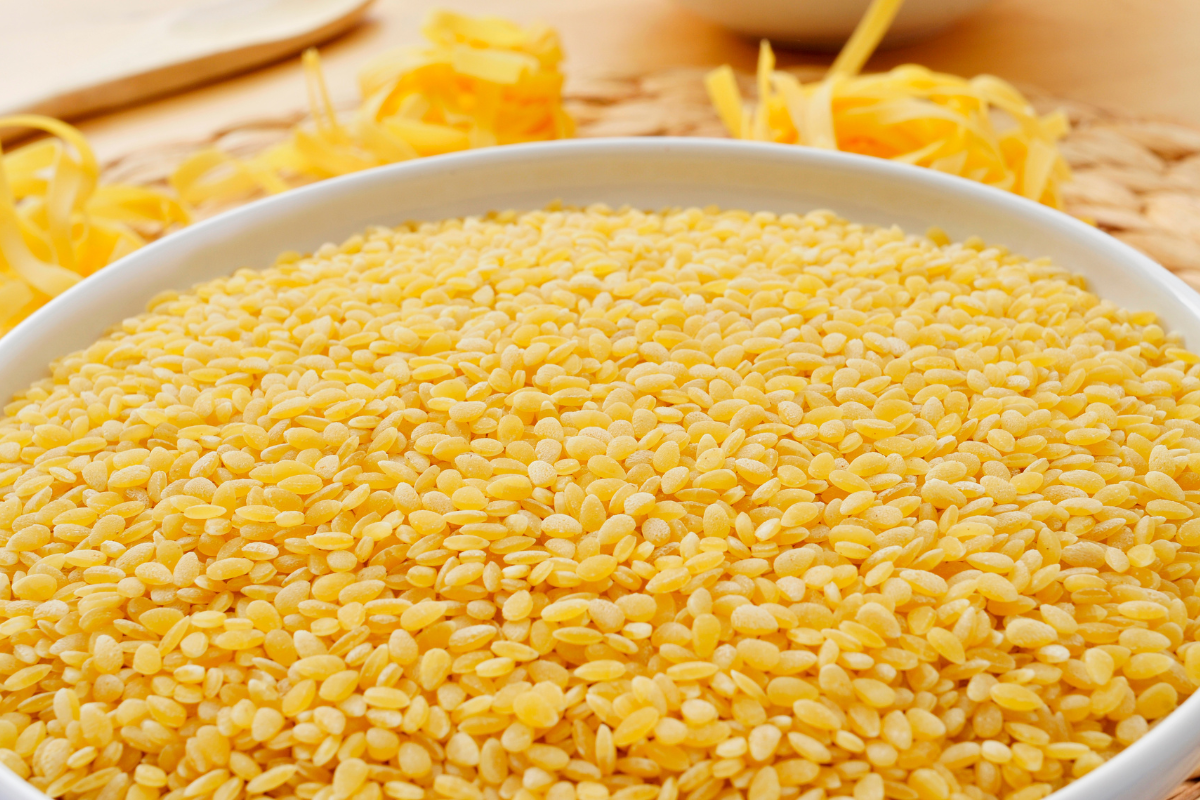Exploring the art of jam-making reveals a delightful blend of culinary tradition and science. In this guide, we delve into the crucial aspects of creating perfect jam, focusing on the optimal ratio of fruit to sugar. By understanding the interplay between these core ingredients, you can craft jams that not only tantalize the taste buds but also capture the essence of the fruit at its peak. From selecting the right fruits to understanding the role of sugar and the scientific principles behind jam setting, this article will guide you through each step to ensure your homemade jam is nothing short of spectacular.
Introduction to Jam Making
Jam making is a culinary practice rich in history and simplicity, yet the precision in the ratio of fruit to sugar is anything but straightforward. This introductory guide to jam making will not only highlight the importance of getting your ratios right but also take a brief look at the history behind this beloved kitchen craft.
Overview of Jam as a Culinary Technique
Jam making combines fruit, sugar, and often a gelling agent like pectin to create a thick, sweet preserve. The process, which dates back hundreds of years, has evolved from a basic method of fruit preservation to a culinary craft rich in variation and technique. The transformation of raw fruit into jam involves cooking it down to draw out natural sugars and flavors, intensifying the fruit’s essence and extending its shelf life.
Importance of Ingredient Ratios in Jam Making
In jam making, the balance between fruit and sugar is critical. This balance not only affects the jam’s flavor and texture but also its ability to preserve well. Too much sugar can overpower the fruit, while too little may result in a jam that’s too loose or prone to spoiling. The ideal ratio ensures that the jam sets properly, with a perfect consistency that’s neither too firm nor too syrupy.
Brief History of Jam Making
The history of jam making is steeped in the need to preserve the bounty of harvests for the leaner months. Ancient civilizations used honey or sugar to preserve fruit, and the practice has been refined over the centuries across various cultures. Today, jam making remains a popular way to savor the flavors of the season and enjoy fruit long after its peak freshness.
This introduction sets the stage for a deeper exploration into the specifics of jam making, from the types of fruit and sugar used to the scientific principles that ensure a perfect batch every time. As we proceed, you’ll gain insights into how you can apply these principles at home to create delicious, high-quality jams.
Ingredients and Ratios
When making jam, the selection and balance of ingredients are crucial to achieving the perfect consistency and taste. This section explores the key components—fruit and sugar—and their roles in jam making, along with tips on finding the optimal fruit to sugar ratios for various types of fruit.
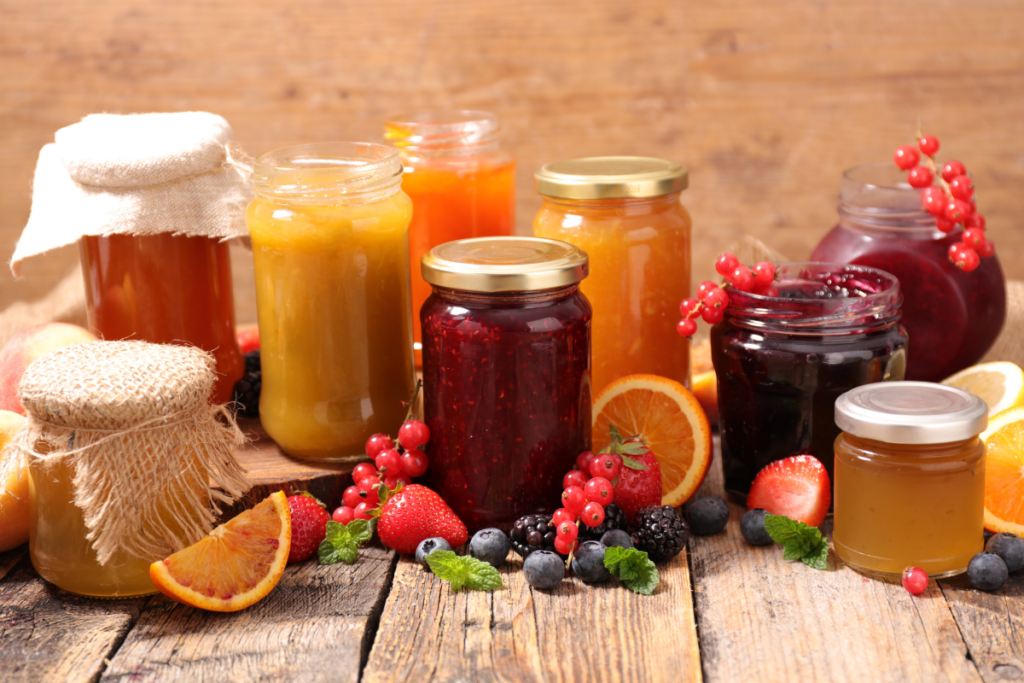
The Role of Fruit in Jam
Choosing the right fruit is foundational to crafting a superior jam. The fruit not only provides the primary flavor but also affects the texture and gelling properties of the final product.
- Selection of Fruit Based on Ripeness: It’s essential to use fully ripened fruit for jam making. Ripened fruit offers the best natural sweetness and the highest levels of pectin, crucial for setting the jam. Unripe fruit, while sometimes tempting to use, can lead to a less flavorful jam that requires more sugar, which can mask the natural fruit flavors.
- Impact of Fruit Type on the Overall Flavor: Different fruits bring unique flavors and textures to jam. For instance, berries offer a deep, rich flavor and color, while stone fruits like peaches provide a softer texture and subtle sweetness. The type of fruit you choose will dictate the amount of sugar and pectin needed and influence the cooking time and method.
The Role of Sugar in Jam
Sugar acts as more than just a sweetener in the process of jam making; it’s a preservative that helps to set the jam by interacting with the fruit’s natural pectin.
- Different Types of Sugars and Their Effects: While granulated sugar is most commonly used, exploring other types like cane sugar or honey can alter the texture and flavor profile of your jam. For example, cane sugar can impart a slightly caramelized flavor and a more rustic texture.
- The Chemistry Behind Sugar’s Preservation Properties: Sugar binds with the water content in the fruit, reducing the moisture available for microbial growth, which helps preserve the jam. This interaction also aids the gelling process, crucial for achieving the desired consistency.
Optimal Fruit to Sugar Ratios
Determining the right balance of fruit to sugar is pivotal and can vary based on the type of fruit and desired sweetness.
- Common Ratios for Different Types of Fruit: Generally, a starting ratio is 1:1 by weight of fruit to sugar. However, this can vary; for instance, sweeter fruits like ripe peaches may require less sugar, while tart fruits like blackberries might need more.
- Adjusting Ratios Based on Fruit Sweetness and Acidity: The natural sweetness and acidity of the fruit play a significant role in how much sugar is needed. Fruits with higher acidity and lower natural sugars might require a higher sugar ratio to balance the flavors and ensure proper setting.
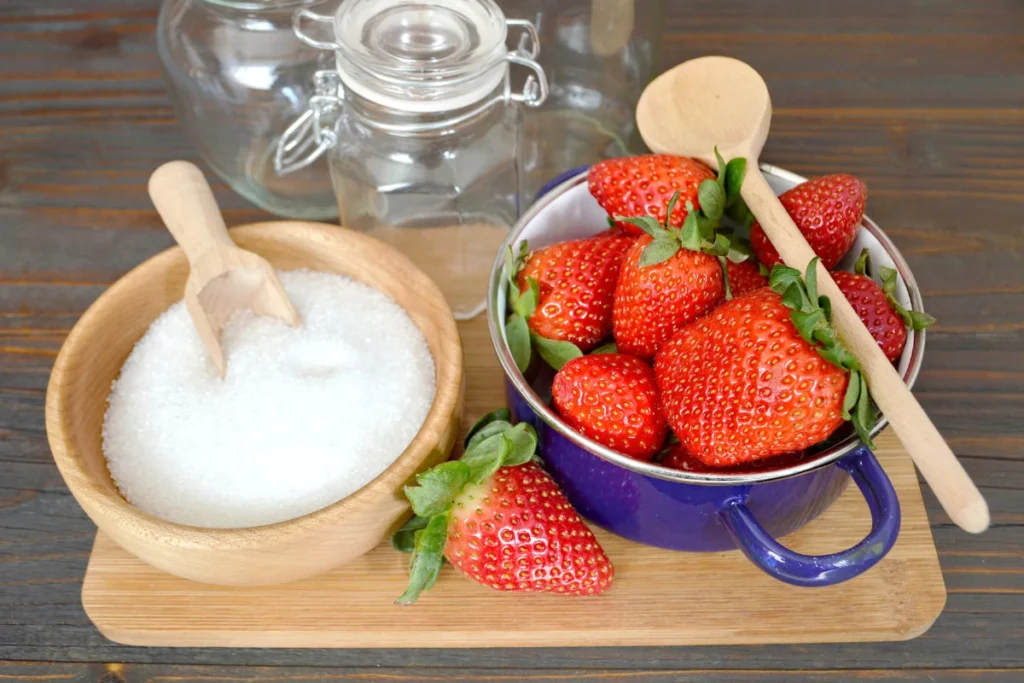
By understanding and applying these principles, you can experiment with different fruits and sugars to create a range of flavorful jams. Each batch can be tailored to your taste preferences and the characteristics of the fruit at hand, leading to endless possibilities in your jam-making adventures.
The Science of Jam Making
Delving into the science behind jam making reveals why certain techniques work better than others. This section examines the role of pectin and the chemistry involved in turning basic ingredients into delicious jams.
Understanding Pectin
Pectin is a natural thickening agent found in many fruits and is key to the gelling process in jam making.
- What is Pectin and Its Role in Jam Making?: Pectin is a type of carbohydrate that occurs naturally in the cell walls of fruits. When heated with sugar and acid, pectin chains bond together, forming a network that traps the fruit solids and liquid, creating the gel-like consistency characteristic of jam.
- How Cooking Affects Pectin’s Behavior: The amount and condition of pectin in the fruit can greatly influence the outcome of your jam. Cooking fruit releases pectin, but overcooking can break it down, preventing the jam from setting properly. Achieving the perfect balance requires precise timing and temperature control.
Cooking Techniques
Effective cooking techniques can make or break the quality of your jam. Understanding how to cook your fruit properly is crucial for texture and flavor.
- Best Practices for Cooking Fruit: Start by gently heating the fruit to gradually draw out the juices and maximize the extraction of pectin. Use a wide, shallow pan to allow for quick evaporation and better concentration of flavors.
- The Role of Acid (Lemon Juice) in Gel Formation: Acid is crucial in jam making because it helps pectin molecules bond more effectively. Lemon juice is commonly added not only for its flavor but also for its ability to create the right acidic environment for gelling. Depending on the fruit’s natural acidity, you may need to adjust the amount of lemon juice to achieve the desired set.
Understanding these scientific principles enhances your ability to innovate and troubleshoot in the kitchen, making jam making not just an art but a delightful scientific experiment. By mastering these techniques, you ensure that each batch of jam has just the right texture and balance of flavors.
Step-by-Step Jam Making Guide
Crafting the perfect jam involves more than just mixing fruit and sugar; it requires careful attention to each step of the process. This guide provides a detailed walkthrough to help you make delicious jam every time.
Preparation of Ingredients
Starting with well-prepared ingredients is crucial for a successful batch of jam.
- Selecting and Preparing the Fruit: Wash your fruit thoroughly and cut it into uniform pieces to ensure even cooking. For fruits with skins, such as peaches or plums, consider peeling them to improve texture.
- Measuring Sugar and Other Additives: Accurately measure your sugar and any other ingredients, like pectin or lemon juice, based on the fruit’s characteristics and your desired consistency. This precision will help in achieving the perfect gel and flavor balance.
Cooking Process: From Start to Finish
The cooking process is where the magic happens, transforming simple ingredients into a rich and flavorful preserve.
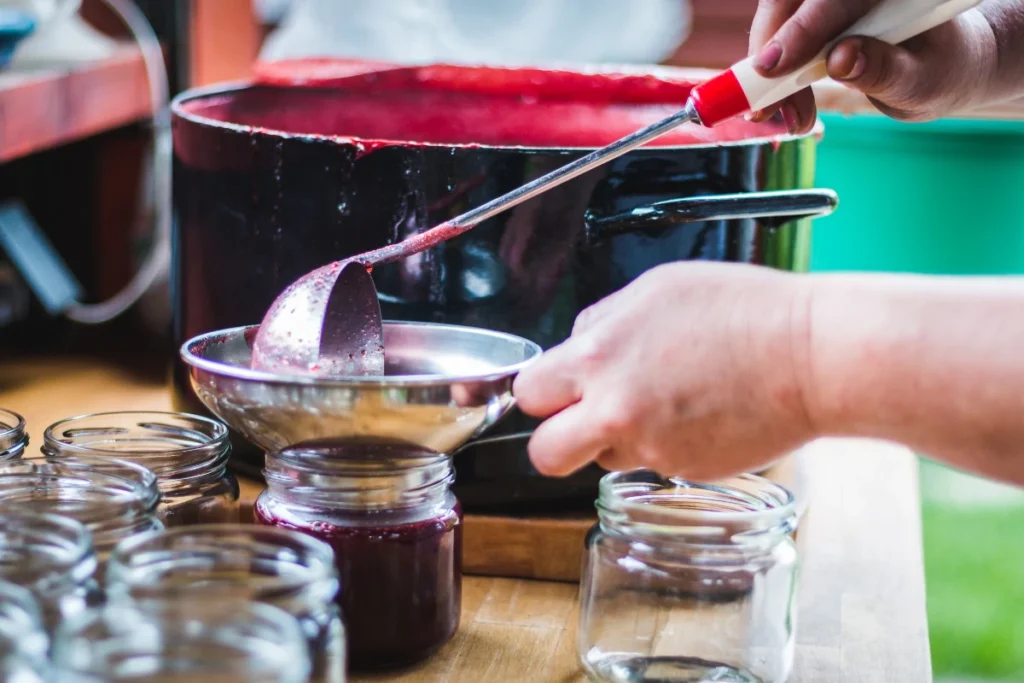
- Combining Ingredients and Initial Cooking: Place the prepared fruit and sugar in a large, heavy-bottomed pot. Slowly bring the mixture to a boil, stirring occasionally to prevent sticking and ensure even sugar dissolution.
- Monitoring the Cooking Stage: As the jam cooks, foam may form on the surface; skimming it off will result in a clearer jam. Monitor the mixture’s temperature and consistency closely. Using a candy thermometer can help you maintain the ideal setting point temperature of 220 degrees Fahrenheit (104 degrees Celsius).
- Testing for Doneness: To test if the jam is ready, place a small amount on a cold plate. If it wrinkles when pushed with a finger, it has reached the correct consistency. Another method is the spoon test: dip a cold metal spoon into the jam; it should coat the spoon thickly and drip off slowly.
Cooling and Storage Tips
Proper cooling and storage are essential to preserve the flavor and safety of your jam.
- Cooling the Jam: Allow the jam to cool in the pot for a few minutes after cooking to prevent it from setting too quickly. This also helps distribute the fruit evenly throughout the jam.
- Transfer to Sterilized Jars: Pour the slightly cooled jam into sterilized jars, leaving adequate headspace to allow for expansion. Seal the jars while they are still hot to ensure a vacuum seal forms, which helps preserve the jam.
- Storage: Store your sealed jars in a cool, dark place. Once opened, keep the jam in the refrigerator to maintain its quality and extend its shelf life.
By following these detailed steps, you can ensure that your homemade jam is not only delicious but also safe and well-preserved. Each batch of jam offers an opportunity to savor the flavors of the season and enjoy the fruits of your labor throughout the year.
Varieties of Jam
Jam is not just a simple preserve; it’s a canvas for creativity. This section explores both classic and unusual jam combinations, offering ideas for innovative recipes and modern twists on traditional flavors.
Classic and Unusual Jam Combinations
The diversity of jam flavors is vast, ranging from single fruit varieties to complex blends that incorporate spices, herbs, or other unique ingredients.
- Summer Classics: Traditional jams like strawberry, blueberry, and raspberry are perennial favorites. These jams capture the essence of summer fruits and are beloved for their bright flavors and vibrant colors.
- Autumn Richness: For a taste of autumn, consider making jams with fruits like apple, pear, or plum. Spices such as cinnamon, nutmeg, or cloves can add warmth and depth to these seasonal preserves.
- Exotic and Unusual: Expand your jam repertoire by exploring exotic fruits like mango, papaya, or passion fruit. Adding ingredients like chili, ginger, or mint can transform a traditional jam into a gourmet delight.
Innovative Recipes and Modern Twists
Innovating with jam recipes allows for personalized and unexpected flavor profiles that can elevate your cooking and baking.
- Savory Pairings: Bacon jam, for instance, combines the smoky sweetness of bacon with the richness of traditional jam ingredients, creating a versatile condiment perfect for sandwiches, burgers, or even as a quirky addition to charcuterie boards.
- Herbal Infusions: Incorporating herbs like rosemary, thyme, or basil into fruit jams can add a fresh and aromatic twist, making them excellent accompaniments to cheeses and meats.
- Citrus and Spice: Adding layers of flavor with citrus zest or spices like cardamom and star anise can create complex jams that are both comforting and intriguing.
Exploring these varieties and experimenting with ingredients will not only broaden your culinary horizons but also provide you with unique, handmade gifts that are sure to impress. Whether you’re a seasoned jam-maker or a novice eager to try your hand at this satisfying craft, the possibilities are as limitless as your imagination.
Nutritional Aspects of Jam
While jam is often celebrated for its vibrant flavors and comforting textures, it’s also worth considering its nutritional profile. This section delves into the health benefits and considerations of consuming fruit-based jams, highlighting the impact of sugar and exploring healthier alternatives.
Health Benefits of Fruit-Based Jams
Jams made from fruit retain many of the vitamins and antioxidants found in the fresh produce, making them a tasty way to enjoy the health benefits of fruit.
- Antioxidant Properties: Fruits like blueberries, raspberries, and blackberries are high in antioxidants, which help combat oxidative stress and can contribute to overall health. When preserved as jam, some of these beneficial properties are maintained.
- Vitamin Content: Depending on the fruit used, jams can also be a good source of vitamins such as Vitamin C and Vitamin A. For example, citrus-based jams or those made from tropical fruits like guava or papaya can offer a significant amount of Vitamin C.
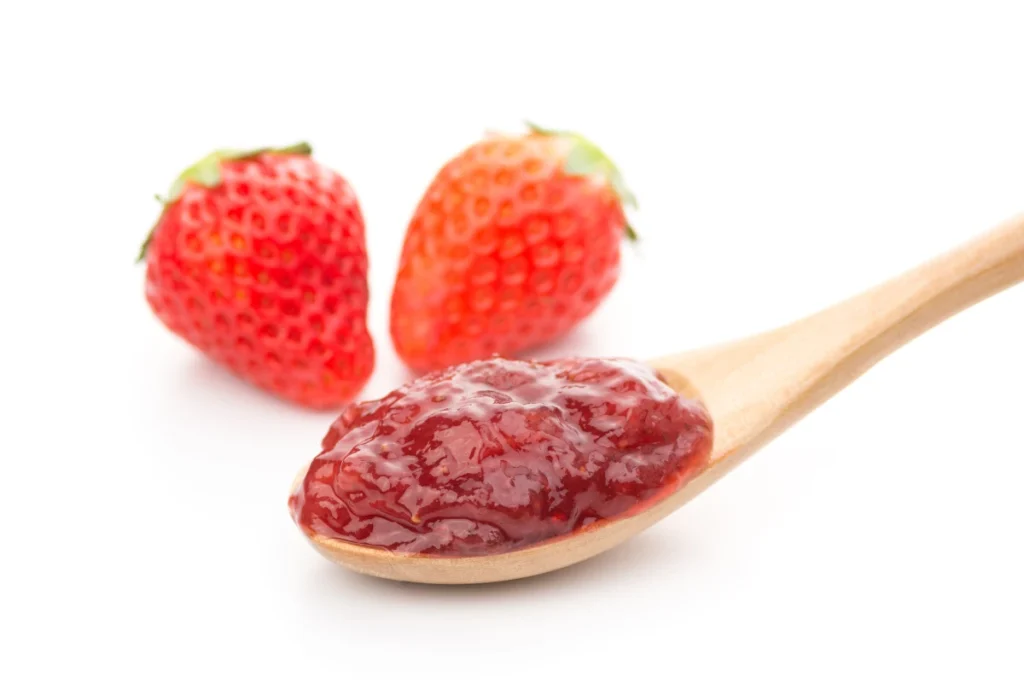
Sugar Content and Its Health Implications
Although jam has nutritional benefits, it is typically high in sugar, which can mitigate some of its health advantages.
- Balancing Flavor and Health: The traditional sugar content in jam not only helps in preservation but also enhances flavor and texture. However, consuming high-sugar diets is linked to various health issues, including diabetes and obesity.
- Reducing Sugar in Jams: For those concerned about sugar intake, there are ways to reduce the amount of sugar used in jam recipes or substitute with natural sweeteners like honey or agave. These alternatives can provide a healthier option while still enjoying homemade jams.
By being mindful of the sugar content and exploring alternatives, you can create jams that are both delicious and better aligned with a healthy diet. Making your own jam also allows for control over the ingredients, ensuring that you can enjoy the freshest, most nutritious results possible without the additives found in many store-bought varieties.
Frequently Asked Questions (FAQs)
Jam making can raise several questions, especially for those new to the craft. This section addresses some common inquiries about the ratio of fruit to sugar in jam, adjustments for different fruit types, and sugar reduction techniques.
What is the best fruit to sugar ratio for jam?
The optimal fruit to sugar ratio typically ranges from 1:1 to 1:0.75, fruit to sugar by weight. However, this can vary depending on the type of fruit and its natural sweetness and pectin content. For example, sweeter fruits like ripe peaches may require less sugar, while tart fruits like rhubarb may need more to balance the acidity and achieve proper gelling.
How does the type of fruit affect jam making?
Different fruits bring unique flavors, textures, and levels of natural sugars and pectin to a jam. These factors influence the cooking time, the amount of sugar needed, and the use of additional pectin. Fruits with high pectin content, such as apples and citrus fruits, often require less added pectin and can be cooked longer. In contrast, fruits with lower pectin levels, like strawberries, might need additional pectin to set properly.
Can you reduce the sugar in jam recipes?
Yes, it is possible to reduce the sugar in jam recipes, though it may affect the texture and preservation properties. To reduce sugar while still ensuring a good set, you can use a special low-sugar pectin or increase the cooking time to reduce the moisture content further. Another option is to use natural sweeteners that can provide a different flavor profile and reduce the overall sugar content.
Addressing these FAQs not only helps clarify the intricacies of jam making but also assists in enhancing your skills and confidence in creating jams that are both delicious and tailored to your taste and health preferences. By understanding these basics, you can experiment more freely and enjoy the rewarding process of making your own preserves.



